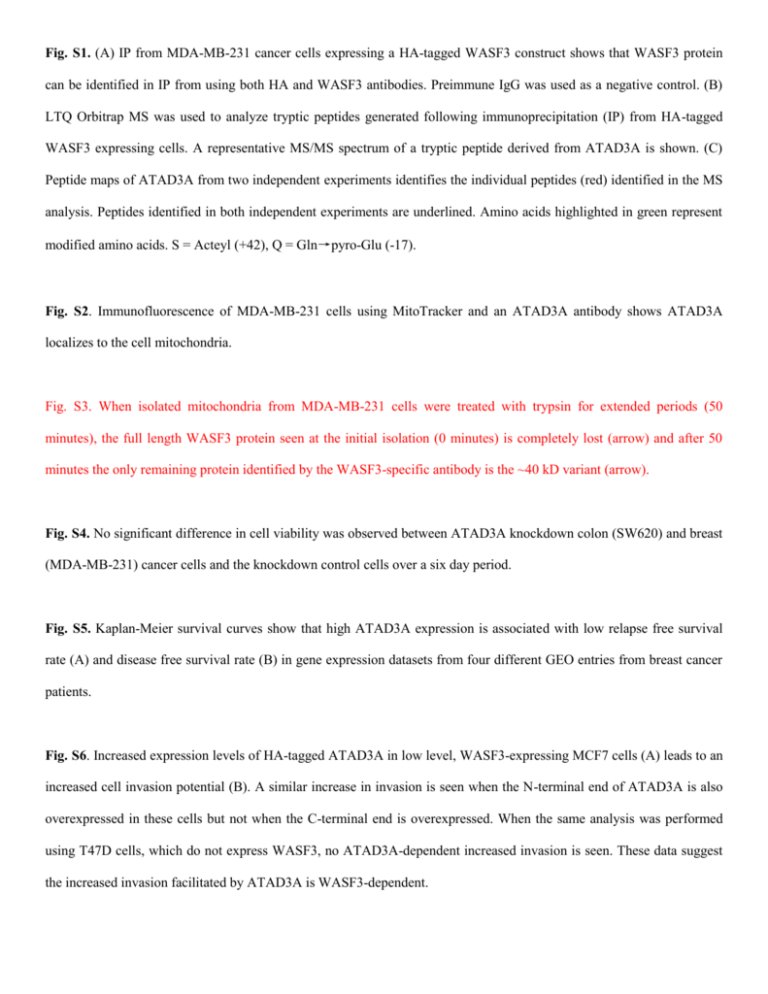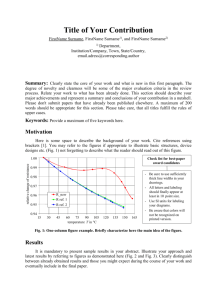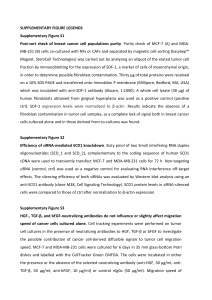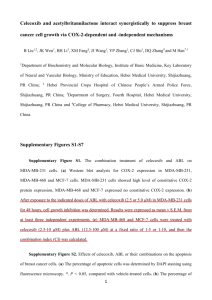Supplementary Figure Legends (docx 13K)
advertisement

Fig. S1. (A) IP from MDA-MB-231 cancer cells expressing a HA-tagged WASF3 construct shows that WASF3 protein can be identified in IP from using both HA and WASF3 antibodies. Preimmune IgG was used as a negative control. (B) LTQ Orbitrap MS was used to analyze tryptic peptides generated following immunoprecipitation (IP) from HA-tagged WASF3 expressing cells. A representative MS/MS spectrum of a tryptic peptide derived from ATAD3A is shown. (C) Peptide maps of ATAD3A from two independent experiments identifies the individual peptides (red) identified in the MS analysis. Peptides identified in both independent experiments are underlined. Amino acids highlighted in green represent modified amino acids. S = Acteyl (+42), Q = Gln→pyro-Glu (-17). Fig. S2. Immunofluorescence of MDA-MB-231 cells using MitoTracker and an ATAD3A antibody shows ATAD3A localizes to the cell mitochondria. Fig. S3. When isolated mitochondria from MDA-MB-231 cells were treated with trypsin for extended periods (50 minutes), the full length WASF3 protein seen at the initial isolation (0 minutes) is completely lost (arrow) and after 50 minutes the only remaining protein identified by the WASF3-specific antibody is the ~40 kD variant (arrow). Fig. S4. No significant difference in cell viability was observed between ATAD3A knockdown colon (SW620) and breast (MDA-MB-231) cancer cells and the knockdown control cells over a six day period. Fig. S5. Kaplan-Meier survival curves show that high ATAD3A expression is associated with low relapse free survival rate (A) and disease free survival rate (B) in gene expression datasets from four different GEO entries from breast cancer patients. Fig. S6. Increased expression levels of HA-tagged ATAD3A in low level, WASF3-expressing MCF7 cells (A) leads to an increased cell invasion potential (B). A similar increase in invasion is seen when the N-terminal end of ATAD3A is also overexpressed in these cells but not when the C-terminal end is overexpressed. When the same analysis was performed using T47D cells, which do not express WASF3, no ATAD3A-dependent increased invasion is seen. These data suggest the increased invasion facilitated by ATAD3A is WASF3-dependent.











